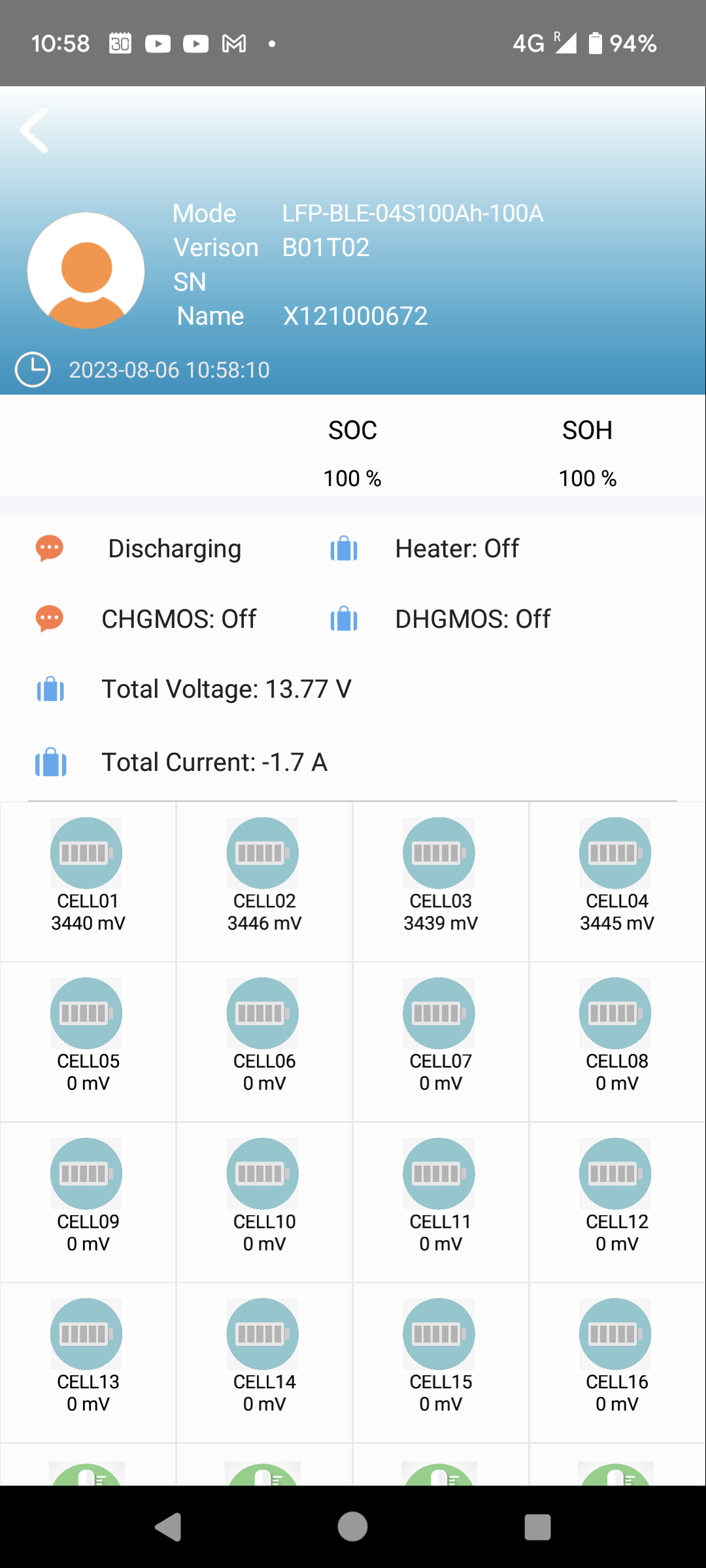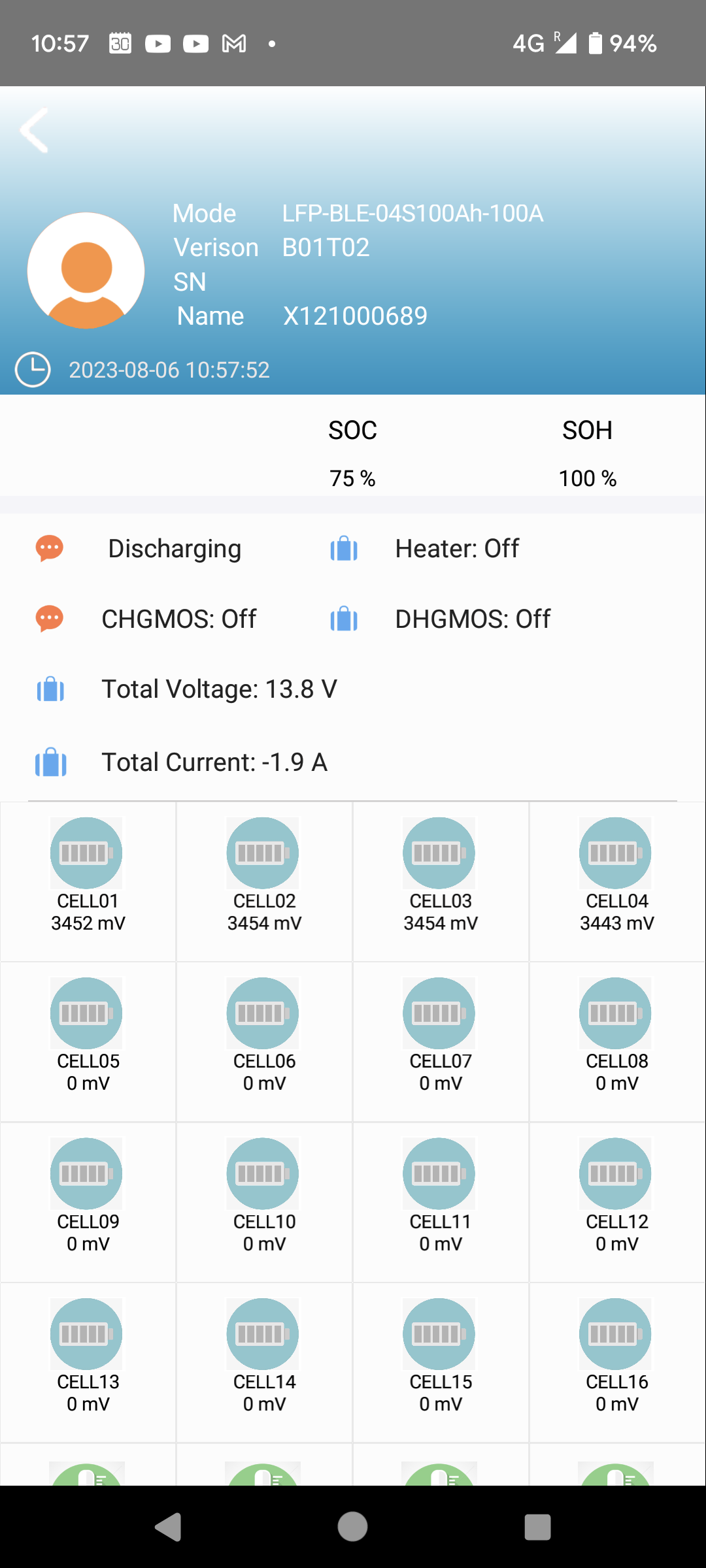Last updated: October 16th, 2023
|
SOC Issues So I purchased a set of two Vision Iron-V LiFePO4 100 Ah batteries for my boat. Apparently it was too early, as the software running on the BMS and the software communicating with the BMS on your phone are not exactly polished. The first problem is to find out which app to use. To save you the effort, here are the links for the IOS and Android versions:
IOS: https://apps.apple.com/ca/app/ll-bms-monitor/id1624879621 The Android version does not seem to have been updated much, and the only updates for the IOS version seems to be bluetooth related - for good reasons, as some of the versions didn't work on iphone 14, in June 2023 (when the phone was 9 months old...). Another problem is that the "set bluetooth name" feature hardly works. After you press ok the first time, then you need to wait a few seconds, and then press ok again, before the new name is actually saved. The next problem is that if you have two batteries in parallel then it seems that the SOC of the batteries is not computed nor reset properly, so after a little while, then one battery is at e.g. 75% while the other states 100%, even though the voltages of both batteries and all cells indicates that both batteries are fully charged, here is an example:
Why does this happen? Because the current measurements of the BMS are not particularly accurate, and they are done with much too slow frequency, so apparently the BMS thinks that significantly more current has been discharged than charged into the battery. A reasonable design would have been to reset SOC to SOH when the voltage was high enough / when cell balacing has finished. Please note that the cells in these batteries are actually very well balanced, and the efficiency of a discharge / charge cycle is as good as expected for LiFePO4 - about 5% loss according to my Nasa BM1 battery monitor. How do you reset the SOC? This guy has found that on some other batteries the SOC is only reset when an over voltage condition is triggered on either battery or cell level. It turns out that something similar is going on with the Vision batteries. According to the datasheet they should be charged with 14.0 to 14.6 V. On two different boats we have charged them with 14.4 V and 14.6 V respectively. It turns out that SOC is not reset until the battery voltage has reached 14.7 V, so you actually need to charge the batteries to a HIGHER voltage than the datasheet specifies! At least the over-voltage protection has been set to not kick in until a battery voltage of 14.8 V, but that equals a cell voltage of 3.7 V, which is a bit high in my oppinion. So, does it matter that the SOC is reported incorrectly? Good question, there are two options:
For instance for these SOK batteries the SOC is not used for turning the battery off: http://support.sokbattery.com/bluetooth-battery-how-to-calibrate-soc-and-actual-capacity-readings/ The SOK battery does have a SOC calibration process as described in the above link, but it requires the battery to become fully discharged, something that is 1. very inconvienient if you're on a long trip, and 2. even for LiFePO4 not really good for the cells. So these are the tests that we have done:
Installation Setup
Note that when reusing an existing charger, that is not prepared to work with LiFePO4, then it will most likely NOT start charging if the batteries have entered the low-voltage protection mode. The reason being that the batteries will have zero volts over the terminals, so the charger thinks that no battery is connected, and hence won't start. There is an easy fix for this: Turn on the charger, and take a wire and short circuit the 12V terminal from your starter battery with the 12V terminals of the LiFePO4 batteries. The batteries will now see a voltage and re-connect, and the charger will see a voltage and start charging. Remove the wire. A fraction of a second should be enough. I am not entirely sure what happens first (the battery or charger connecting), but it doesn't really matter in which order it happens. You could, of course, also just start your engine and let the Orion initiate the charging process.
|

